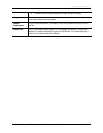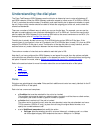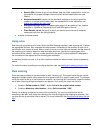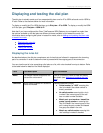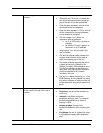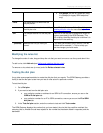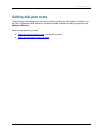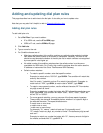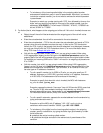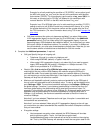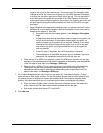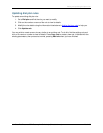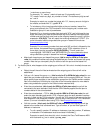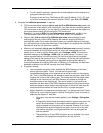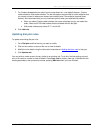
Adding and updating dial plan rules
Cisco TelePresence ISDN Gateway 2.1 Online help (Printable format) 26 of 135
To include any of the incoming called digits in the outgoing called number,
enclose each substitution group in a set of parentheses. Note that if you want to
include the complete number, you do not need to enclose the whole expression
in parentheses.
Example: to match any number starting with "678", then followed by three or four
digits, and you want the final digits to form part of the called number, type the
expression: 678 (DDDD?). This will match "6780000", "678123", "6789999" etc.
but not "67822" or "775000".
5. For Action (that is, what happens to the outgoing part of the call if this rule is invoked) choose one
of:
o Reject the call: the call will be terminated and the outgoing part of the call will not be
established.
o Enter the auto attendant: the call will be connected to the auto attendant.
o Enter the auto attendant + TCS-4: the call enters the auto attendant and sends a TCS-4
request; when the auto attendant receives the reply, it dials out the TCS-4 extension.
Usually the TCS-4 reply is fast enough that the auto-attendant is not displayed; however,
you may see it briefly with the TCS-4 extension shown. (For more information about
using TCS-4 see
Example dial plan rules)
o Call with the original called number: (not valid if you are going to select Video using
H.221 aggregation (legacy) as the Call type in the Additional parameters section) the
outgoing part of the call will be placed to the number that was the original called number.
For example, an incoming ISDN call to "54321" will result in an outgoing call placed over
IP to "54321".
o Call this number: (not valid if you are going to select Video using H.221 aggregation
(legacy) as the Call type in the Additional parameters section) the outgoing call will be
placed to the number that is entered here. Type a number, or for ISDN to IP rules you
can also type an IP address or hostname.
To call a specific number (or for ISDN to IP calls, you can also specify an IP
address, hostname, or H.323 URI), type that number (or IP address, hostname,
or H.323 URI). IPv6 addresses must be enclosed in brackets [ ].
Example: to specify that when this rule is invoked, the MCU with hostname
my_mcu is called, type my_mcu.
Example: suppose the domain "cisco.com" has a H.323 service (SRV) record set
up. To call a H.323 video endpoint residing in that domain, e.g. with URI
example.person@cisco.com, set an action to call example.person@cisco.com.
For information about domain (DNS) SRV records, see RFC 2782.
To call a specific extension, separate the number/address from the extension by
typing an exclamation mark (!).
Example: to call the MCU with IP address "10.2.1.33", and try to join a
conference with numeric identifier "00000", type 10.2.1.33 ! 00000
To include any of the digits from the incoming called number in the outgoing
number, specify a substitution, by typing the dollar sign ($) followed by a index.
Valid indices are:
A: substitute the entire incoming called number.
1..9: substitute the digits enclosed in the relevant set of parentheses of the
condition.



